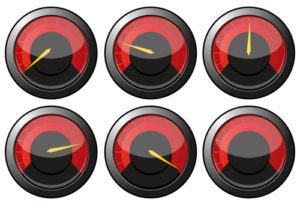Last Updated on July 9, 2024 by Dave Schoenbeck
Defining key performance indicators (KPIs) is the first essential step in tracking and evaluating progress. This allows you to focus on activities that are important to your business.
Though most business people understand the value of key performance indicators (KPIs), they often fail to execute them. 90% of business measurements collected are rarely used for decision-making.
Think of KPIs as your car’s dashboard: they tell you the status of your performance quickly and easily. Here are 6 valuable tips to help you select the key performance indicators (KPIs) that genuinely resonate with your business.

1. Identify the results that you expect.
KPIs should be directly related to your primary goals. If you still need to write out your goals, start there.
Don’t try to bite off more than you can chew. In other words, stay away from measuring everything that moves. The secret sauce is to focus your effort and resources on collecting and reporting the data that moves the needle – data that leads to action and drives positive results.
2. Understand lead and lag measurement differences.
According to the book The 4 Disciplines of Execution, the idea behind the lead measurement is that to get the result you want; you first have to create the measure of a strategic action that, when planned and taken, will have the most impact on your goals. In contrast, lag measurements show you the outcome of past actions.
Lag measures are metrics, while lead measures are actions. Always think in terms of actions. For example, to drive overall sales, you must first measure the number of leads generated and how well you close sales.
3. Focus on quantitative, not qualitative, measurements.
Focus on quantitative measurements or complex data that attempts to answer “how much.” Though qualitative key performance indicators (KPIs) help you understand why something has happened, the problem is they tend to be vanity metrics that are not only hard to track but also too subjective. Qualitative performance measures don’t indeed exist.
4. Don’t measure more than 10 KPIs.
Key performance indicators (KPIs) are powerful yet come with a cost. That said, it’s critical to keep the list short and sweet so you can invest your time and resources efficiently. I recommend you start by measuring your number of leads, lead conversion rate, average sales, number of transactions, and margins. The remaining five should be operational measurements tied directly to your goals.
5. Measure KPIs weekly or monthly.
Depending on the characteristics of each KPI, the measurement frequency can vary. Update and measure your KPIs regularly, either weekly or monthly. Though higher consistency is better for decision-making, choose the frequency that makes sense for your business. In addition, since the ease of data collection is essential, it’s a good idea to start automating your collection process.
6. Be ready to revise your list.
After experimentation, you will be able to differentiate the key performance indicators (KPIs) that are helping your business from the ones that aren’t. As your business grows and changes, so should your KPIs. Hence, be willing and open to tailoring your list of measurements.
Choosing the right KPIs is not always straightforward. Every business is unique. That said, take the time to arrive at the KPIs best aligned with your goals and offer valuable insights into how you can drive your business forward.
Want to know more about key performance indicators (KPIs) and best practices? I offer a one-hour complimentary online coaching session with no strings attached. Simply fill out my contact form.
Coach Dave


